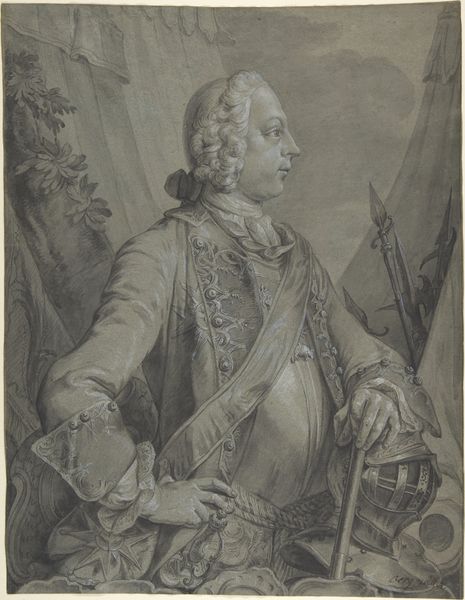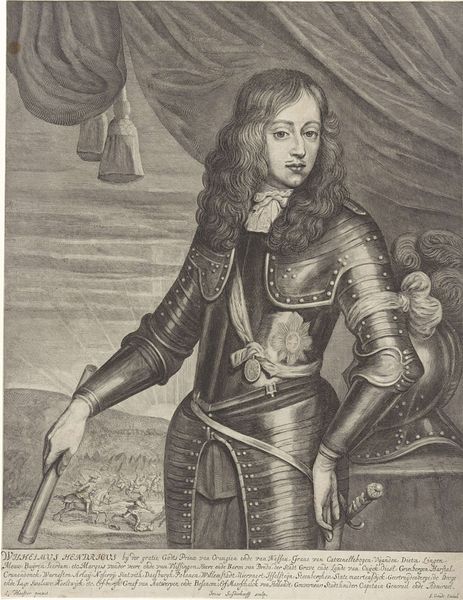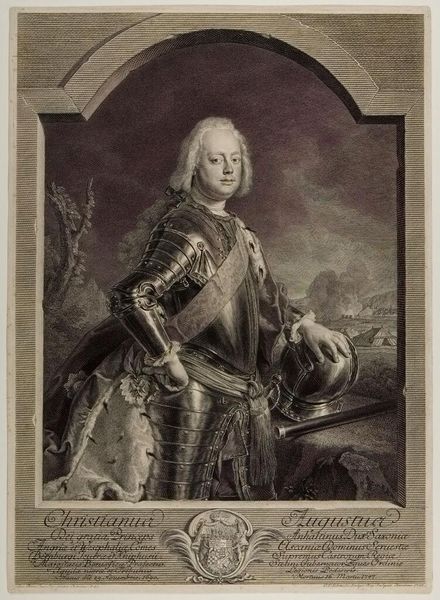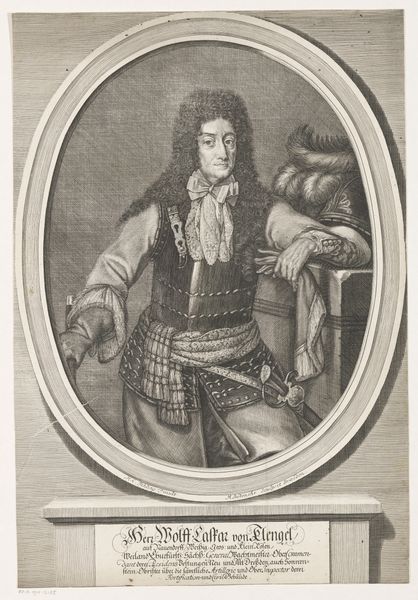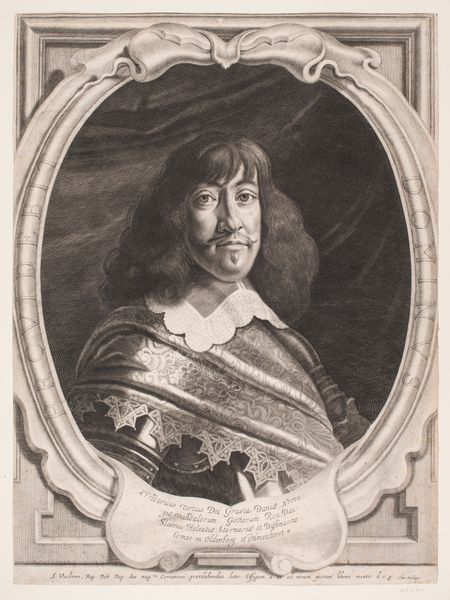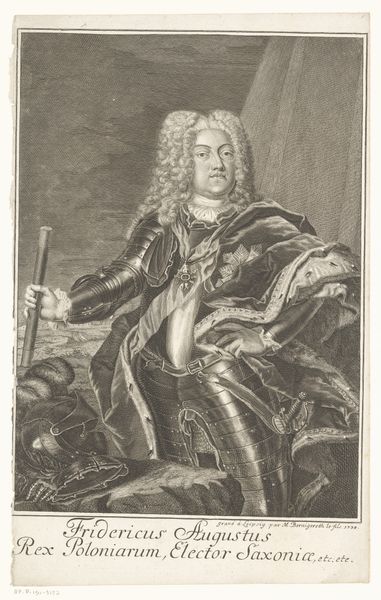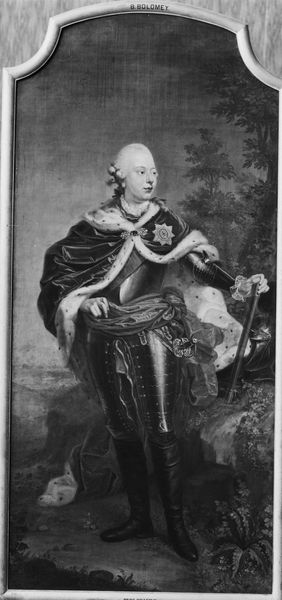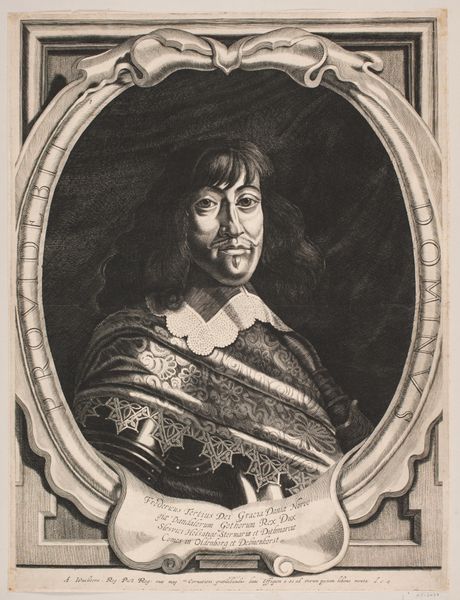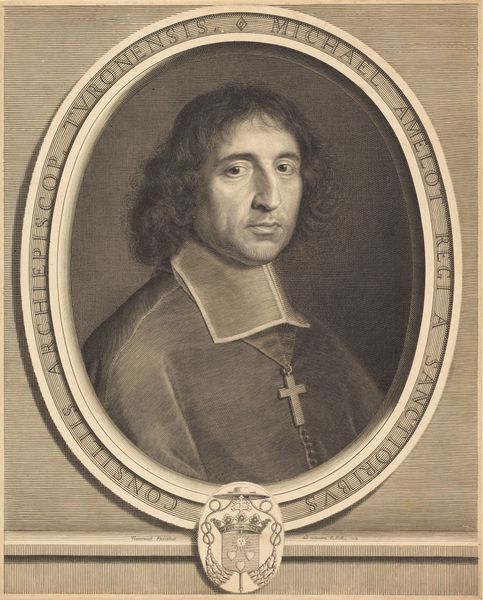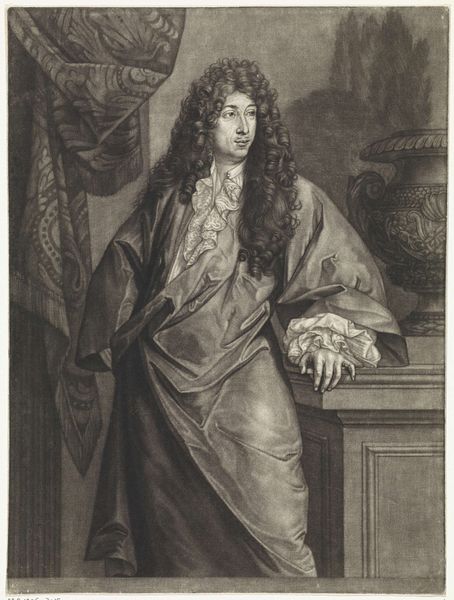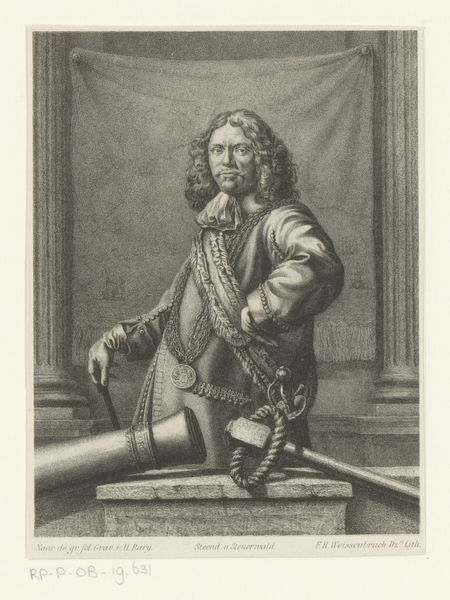
oil-paint
portrait
baroque
oil-paint
landscape
genre-painting
history-painting
Dimensions: 112 x 131 cm
Copyright: Public domain
Editor: This is Ferdinand Bol’s “Portrait of Engel de Ruyter,” painted in 1669 using oil paint. There’s such a calm, assured presence about the figure, especially contrasted with the naval scene playing out behind him. What historical context informs your interpretation of this portrait? Curator: Bol situates de Ruyter not just as an individual, but within the context of Dutch maritime power. Think about what the backdrop of naval ships might be signalling. It’s less a celebration of individual achievement, and more a statement about Dutch identity in a time of intense colonial expansion and conflict. How might de Ruyter's identity be intrinsically linked to this maritime dominance? Editor: So, you’re saying that de Ruyter’s wealth and status are tied directly to the country's maritime activities, and that this image is intended as propaganda for Dutch power? Curator: Not simply propaganda, but certainly a visual representation of a specific political and economic structure. The opulent clothing, the backdrop, the very act of commissioning such a grand portrait – it all speaks to a system where naval power equates to personal and national prestige. What social structures allowed this portrait to even exist? Editor: I never thought about the socio-political elements of portraiture that deeply. I guess, moving forward, I’ll approach artworks with much more social awareness. Thank you! Curator: The pleasure is all mine! Let us go observe the art through intersectional lenses!
Comments
No comments
Be the first to comment and join the conversation on the ultimate creative platform.
